-
Courses
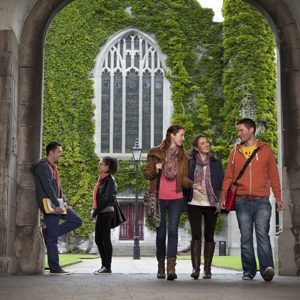
Courses
Choosing a course is one of the most important decisions you'll ever make! View our courses and see what our students and lecturers have to say about the courses you are interested in at the links below.
-
University Life

University Life
Each year more than 4,000 choose University of Galway as their University of choice. Find out what life at University of Galway is all about here.
-
About University of Galway

About University of Galway
Since 1845, University of Galway has been sharing the highest quality teaching and research with Ireland and the world. Find out what makes our University so special – from our distinguished history to the latest news and campus developments.
-
Colleges & Schools

Colleges & Schools
University of Galway has earned international recognition as a research-led university with a commitment to top quality teaching across a range of key areas of expertise.
-
Research & Innovation

Research & Innovation
University of Galway’s vibrant research community take on some of the most pressing challenges of our times.
-
Business & Industry
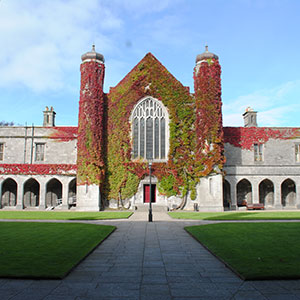
Guiding Breakthrough Research at University of Galway
We explore and facilitate commercial opportunities for the research community at University of Galway, as well as facilitating industry partnership.
-
Alumni & Friends
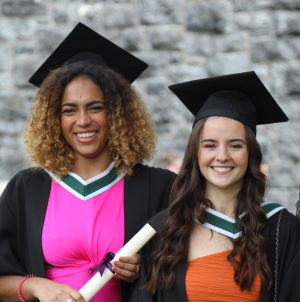
Alumni & Friends
There are 128,000 University of Galway alumni worldwide. Stay connected to your alumni community! Join our social networks and update your details online.
-
Community Engagement
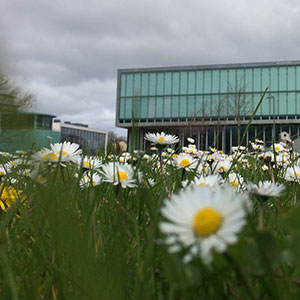
Community Engagement
At University of Galway, we believe that the best learning takes place when you apply what you learn in a real world context. That's why many of our courses include work placements or community projects.
Wave 2 Results

Corona Citizens Science Project - Wave 2 Results
Medical Appointments
About 32% (10,830) people have postponed medical treatment of check-ups. Mainly because the healthcare professional is not seeing any patients at the moment (55%), 39% say they don’t want to create an extra burden, and 26% is worried about the risk of catching COVID-19.
Of these patients, 41% has preventative routine examinations postponed, 48% a consultation with the GP, 14% had a hospital medical examination postponed and 6% an operation. More detail was given by about a fifth of the respondents with delayed/cancelled treatments. Dental appointments, blood tests, orthopaedic procedures and follow-up consultations after an operation were most often mentioned. Of particular interest are, parents reporting postponement of vaccination and pre and postnatal check-ups, while fertility treatment has also been halted.
Health
About 3% of respondents indicated flu-like symptoms in the past 2 weeks (1,200), down from 6% in precious. The same symptoms are common, tired/exhaustion (66%), sore throat (52%), dry/throaty cough (38%), runny nose (37%) and/or muscle pain (38%). This did not change from the last time. Similarly, of the people they live with, 11% indicated these had flu-like symptoms, which was down from 17% previously. We are probably seeing the impact of social distancing here as well.
Of the people with flu-like symptoms, 48% think is was corona, but only 42% contacted their GP (previously 53%). Of these patients, 27% were referred for testing (down from 36%). These tests were positive for 25%, negative for 42%, waiting for results were 17% and waiting for the tests were 5%, 125 was cancelled. Previously only 10% was positive and most people were still waiting for results (36%) or the test (37%).
Childcare & Home Schooling
Childcare arrangements stayed similar. Of preschool children (about 5,000), 89% were taken care at home. However, when looking at differences between non-essential and essential workers, over 92% were taken care of at home compared to 73% of the essential workers. Essential workers have to rely more often on childminders (10%), family (11%) and Grandparents (4%), compared to non-essential workers (respectively 4%, 2% and 2%).
There were over 6,000 parents with children in primary school, where parents ran into obstacles with the school work their child’s motivation (54%), their own work (40%, other children in the house (24%) and clarity around what was expected (18%). For secondary school parents (about 7,000), obstacles were mainly motivation (55%) and Clarity around what was expected (20%), and to a lesser extent their own working from home situation (15% for <15 age group and 9% for over 15 age group. No obstacles were identified by 28% of secondary school parents. Overall, 17% of the parents of school children of any age, identified resources as an obstacle.
Restrictions
The recommendations and interpretation was clear and did not change for people, still 92% indicated an 8 or higher for social distancing, 83% for isolation recommendations, 81% for leisure and travel and 79% on shopping. No change here, which would have been worrying if it would have changed.
Adoption of their own behaviour at home was a little lower than previous (77% compared to 85%) but similar for others (67% versus 66%). In public places, 79% of people adapted their own behaviour and 38% for others, similar to previous.
Five different restrictions were given to rank in order in which they would prefer to see these relaxed. Across all the groups we looked at (parents, young people, working people), in the first place is to be able to go beyond the 2km limit, second is allow small group meetings, third is to go back to work, fourth is to open schools and childcare again and in last place, to open shops, restaurants and pubs again.
Employment
Most people were employed, 69%), while, similar to last time as well, students made up 4%, retired 13% and homemakers 7%.
Of the people who were in employment (23,000), 8% always worked from home, 20% sometimes and 38% never. Of the one never working from home, 18% were not allowed, 20% said their job did not lend itself to working from home while 40% needed FTF contact. In the past week, 45% worked from home (it was Easter holidays) and 15% indicated to be an essential worker (about 5,000 respondents).
Household Tensions and Leisure
Tensions in the household are have remained more or less the same, much more tension compared to usual is recorded in about 8-10% of the households.
Walking remains the most popular leisure activity (90%). Indoor exercise is done by about 56% of respondents, 35% play board games, 60% do some sort of gardening and 42% got busy with DIY.
Compared to last time, more people are chatting in the open air (63% compared to 54% previous), probably reflecting the nice weather.
Wellbeing & Mental Health
The preliminary data from the first survey suggests that the pandemic has had a negative impact on well-being and mental health when compared with the Healthy Ireland Survey of 2016. However, the negative effect of the pandemic on well-being and mental health would appear to be greater for younger as compared to older people. This may be explained by the fact that younger people are likely to have experienced a much greater change in day-to-day living than those in the older population. The second survey did not show any important changes in either mental health or well-being compared to the first one.
Demographics
A total of 35,000 people responded in the second wave and 37% had participated in the first wave.
Their mean age was 46, median 45, there was no difference between this survey and the previous one. We had slightly more males 29% compared to 23% the last time, but the ages didn’t differ between males and females.
Age groups were well represented, with about 50% of the people between 35 and 54, 5% under the age of 25 and 11% were 65 or older.
Dublin had the higher number of respondents with 41% (previous 38%) and Galway 14% (previously 12%, cork 7% (previous 6%) and all other counties were represented at less than 5%.
Similar to the previous survey, 10% of people who responded were living alone, and a third of them didn’t talk to anyone the day previous.
There were 14% of people cocooning and 35% took on additional caring responsibilities since the COVID crisis.
About the Survey
Research teams at Dublin City University, NUI Galway and the Insight SFI Centre for Data Analytics (NUI Galway) have worked together on this population-wide survey to find out about the impact of the Coronavirus pandemic and the associated restrictive measures (lockdown, social distancing) on daily life in Ireland.
 |
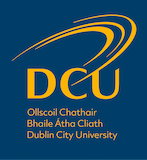 |
 |
You Can Help
Thanks to everyone who took part to help us understand how the restrictive measures are impacting you.
Partners
This study is being conducted by researchers from NUI Galway & Dublin City University in partnership with the Insight SFI Research Centre for Data Analytics.















